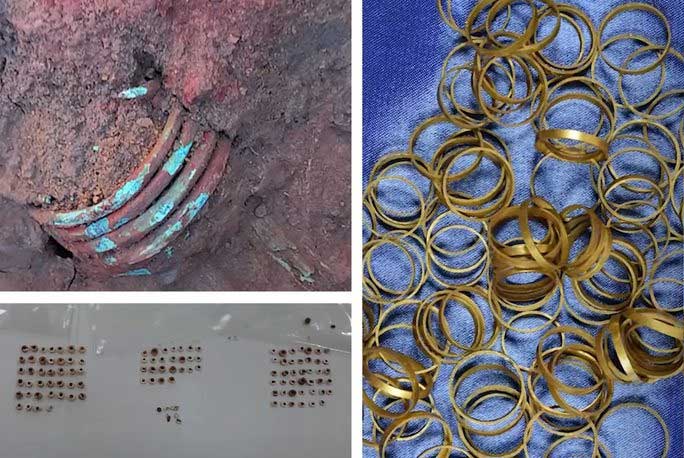During the construction of a connecting road between the highway and a city, Romanian archaeologists discovered an extravagant ancient tomb, paving the way for a significant archaeological complex.
According to Heritage Daily, the mysterious ancient tomb has been identified as belonging to the Tiszapolgár culture (circa 4500 – 4000 BCE), which is a Paleolithic culture that spanned a vast area that today includes several Eastern and Central European countries.
The ancient tomb was discovered accidentally during the construction of a new road linking the city of Oradea to the A3 highway, near the village of Biharia in Bihor County, Crișana, Romania.

Jewelry found in the ancient tomb of the mysterious lady – (Photo: Tarii Crisurilor Museum)
Dr. Călin Ghemiş from the Tarii Crisurilor Museum, who leads the research team from Romania and Hungary, stated that the tomb contained the remains of a woman. She was buried with 169 gold rings adorning her hair, along with a multi-layered bronze bracelet, two gold beads, and approximately 800 beads made from bone.
These beads may have belonged to items such as necklaces or bracelets, but the material connecting them has deteriorated.
Based on the initial study of the deceased’s teeth and stature, it is believed that she was a woman of high social status, possibly a princess or ancient queen.
Samples from the ancient tomb have been sent to laboratories in Romania and the Netherlands for more accurate dating through radiocarbon isotope analysis, alongside DNA sampling and further anthropological studies.
In a broader excavation project, the research team also found traces of two houses near the town of Sântandrei, containing pottery dating from the 2nd century BCE to the 2nd century CE.
They also uncovered an entire settlement of the Sarmatians from the 3rd to the 4th century, also near Biharia.


















































